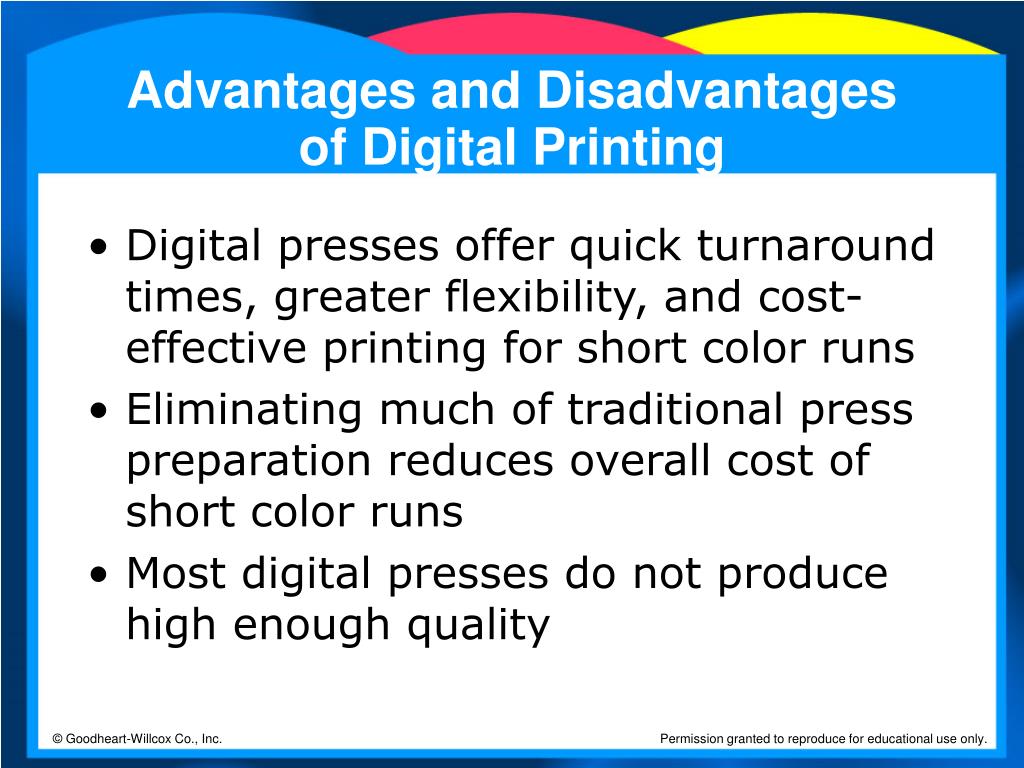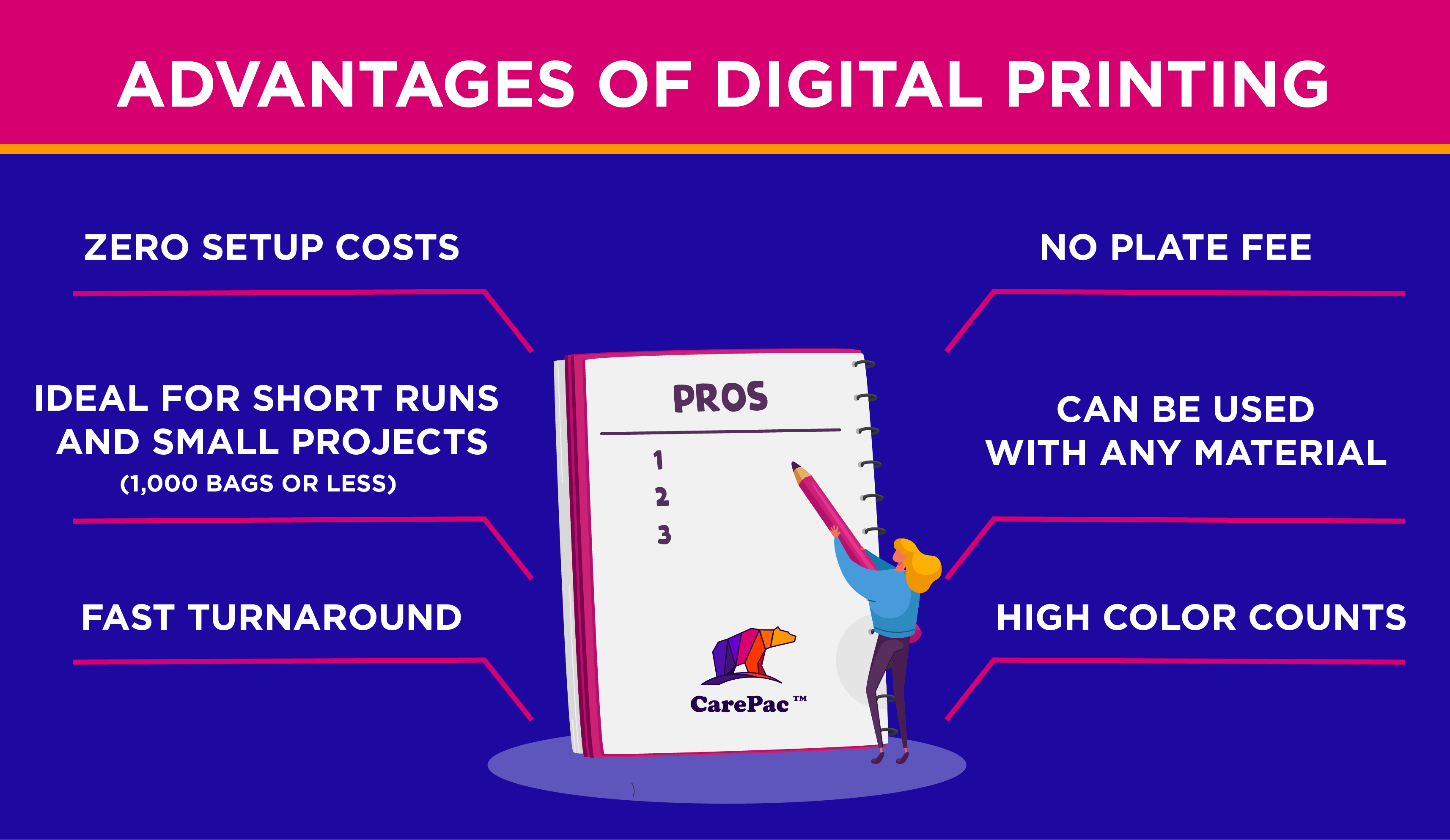Unknown Facts About Digital Printing
Unknown Facts About Digital Printing
Blog Article
The Greatest Guide To Digital Printing
Table of ContentsThe Facts About Digital Printing UncoveredDigital Printing - An OverviewWhat Does Digital Printing Do?Digital Printing Fundamentals ExplainedUnknown Facts About Digital PrintingNot known Facts About Digital Printing
Variable information printing, such as direct mail with customized codes and addresses, is preferably suited for digital printing. Digital quick printing just needs four actions of design, review, printing and binding to get every little thing done. Digital quick printing has an exceptional benefit: print on demand.According to PMMI, electronic printing enables brand names and manufacturers to react promptly to customer needs while improving the supply chain, lowering warehousing cost and waste, and delighting in faster time to market. That all sounds excellent, but just how does this innovation do all that? The significant differentiator of these technologies is that there are no set-up fees and no plates with electronic printing.
The Single Strategy To Use For Digital Printing
This results in quicker turn-around time and lowers cost when using digital printing.
Digital printing is highly flexible, so it's very easy to make modifications to the bundle design rapidly. It all goes back to the plates.
A lot more supply can mean more waste in the future. With standard printing techniques, short-run printing is simply not feasible. Because a terrific style can make or damage your item, digital printing continually produces high-grade, clear and colorful graphics each time. Digital printing on flexible pouches adds the intense, dynamic, and accurate graphics that virtually beckon customers to reach out and touch them.
Digital printing is the process of printing digital-based photos directly onto a selection of media substrates. There is no demand for a printing plate, unlike with balanced out printing. Digital files such as PDFs or desktop posting documents can be sent out straight to the digital printing press to print theoretically, photo paper, canvas, fabric, synthetics, cardstock and various other substrates.
Some Known Factual Statements About Digital Printing
According to PMMI, electronic printing allows brands and producers to react promptly to consumer demands while enhancing the supply chain, reducing warehousing cost and waste, and taking pleasure in faster time to market. That all audios great, yet how does this technology do all that? The significant differentiator of these modern technologies is that there are no set-up costs and no plates with electronic printing.
According to Wikipedia, the biggest difference between electronic printing and traditional techniques such as lithography, flexography, gravure, or letterpress is that there is no need to change printing plates in digital printing, whereas in these analog printing techniques home plates are repeatedly changed. This causes quicker turnaround time and lowers expense when utilizing digital printing.

What Does Digital Printing Do?
With conventional printing methods, short-run printing is just not possible. Because an excellent visit this site right here style can make or break your item, digital printing constantly creates high-quality, clear and vibrant graphics each time.

According to PMMI, electronic printing enables brands and producers to respond rapidly to consumer needs while enhancing the supply chain, decreasing warehousing cost and waste, and taking pleasure in faster time to market. That all sounds wonderful, however just how does this technology do all that? The major differentiator of these modern technologies is that there are no set-up charges and no plates with digital printing.
More About Digital Printing
According to Wikipedia, the best distinction in between electronic printing and standard techniques such as lithography, flexography, gravure, or letterpress is that there is no need to change printing plates in electronic printing, whereas in these check here analog printing techniques home plates are repetitively changed. This causes quicker turnaround time and decreases cost when utilizing electronic printing.
Digital printing is extremely versatile, so it's easy to make adjustments to the package layout swiftly. It all goes back to the plates.

Digital Printing for Dummies
Digital printing is the process of printing digital-based photos directly onto a variety of media substrates. There is no demand for a printing plate, unlike with balanced out printing. Digital documents such as PDFs or desktop publishing files can be sent directly to the digital printing press to print on paper, picture paper, canvas, material, synthetics, cardstock and various other substratums.
Report this page